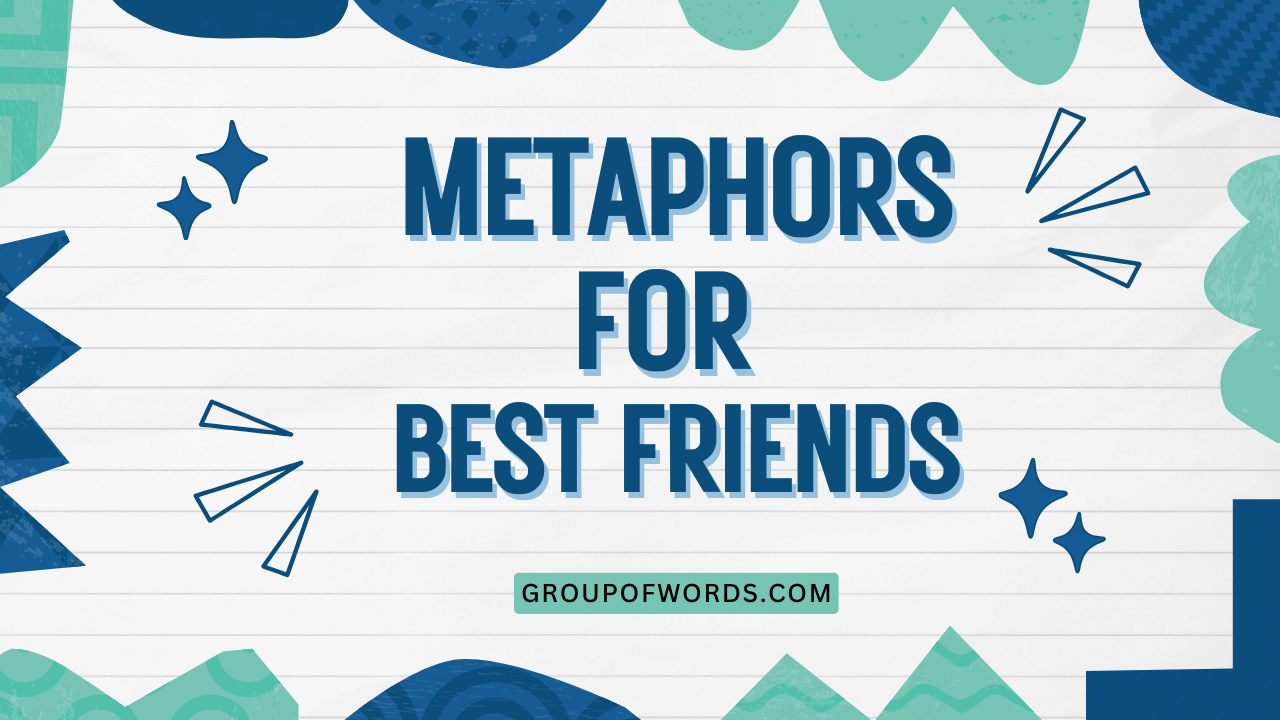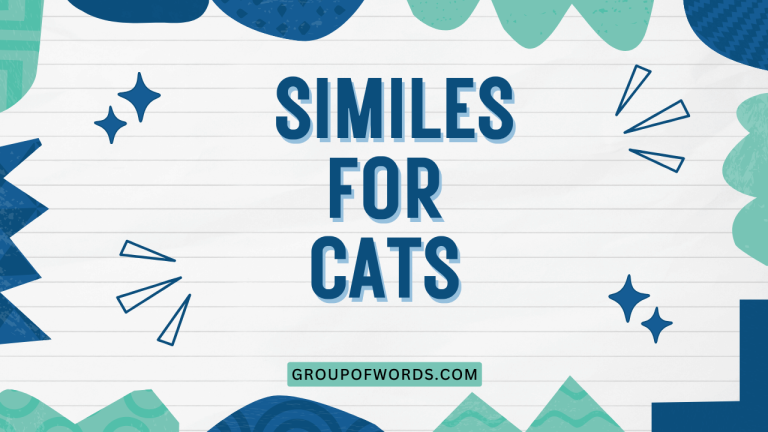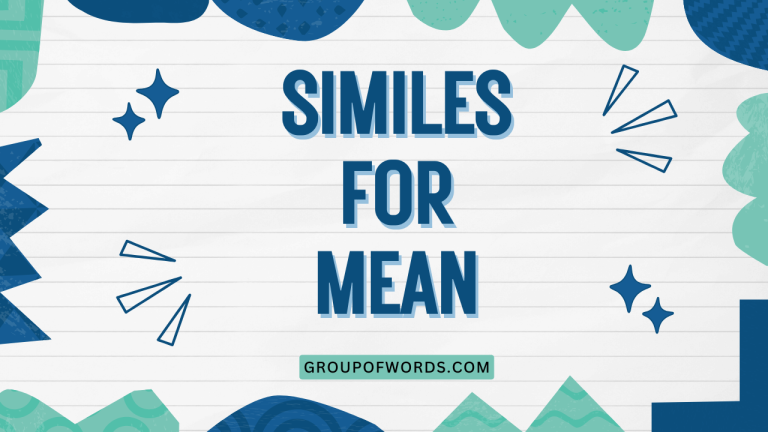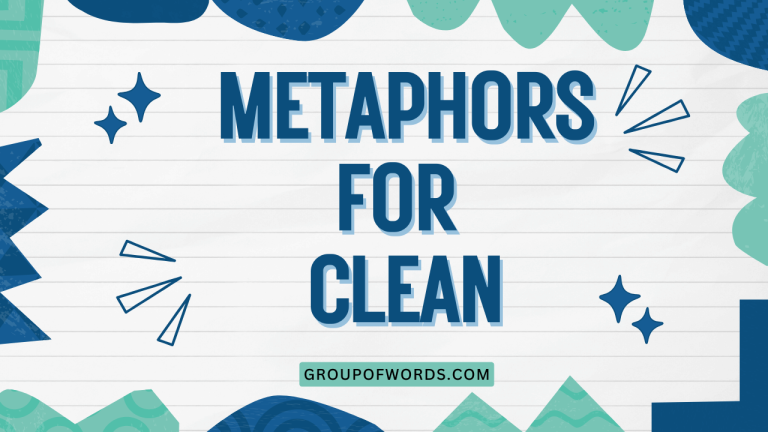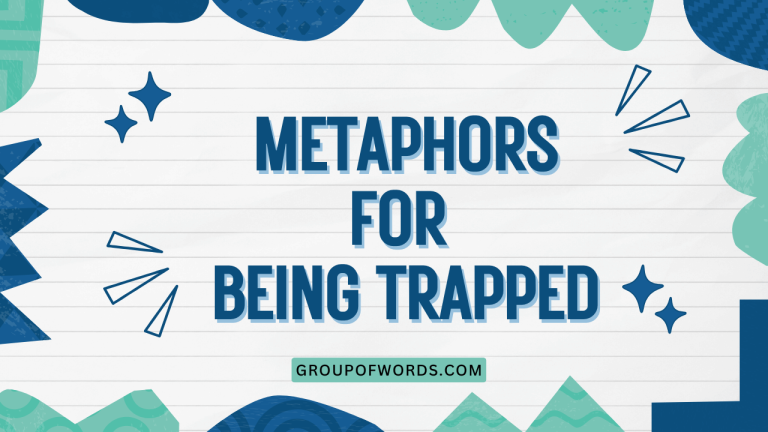Metaphors for Best Friends: A Grammatical Exploration
Understanding metaphors is crucial for mastering English, as they add depth and color to our language. When describing relationships, especially the bond of best friends, metaphors become particularly poignant.
This article delves into the grammatical aspects of metaphors used to describe best friends, exploring their structure, types, and usage. Whether you’re an English language learner, a creative writer, or simply someone interested in the nuances of language, this guide will provide you with a comprehensive understanding of how metaphors enrich our expression of friendship.
This article also covers common mistakes, practice exercises, and advanced topics to ensure a thorough grasp of the subject. By the end, you’ll be able to identify, analyze, and effectively use metaphors to describe the unique connection between best friends.
Table of Contents
- Introduction
- Definition of Metaphor
- Structural Breakdown of Metaphors
- Types of Metaphors for Best Friends
- Examples of Metaphors for Best Friends
- Usage Rules for Metaphors
- Common Mistakes with Metaphors
- Practice Exercises
- Advanced Topics in Metaphorical Language
- Frequently Asked Questions
- Conclusion
Definition of Metaphor
A metaphor is a figure of speech that directly compares two unrelated things without using “like” or “as.” It asserts that one thing *is* another, creating a vivid image or conveying a deeper meaning. Metaphors are essential tools for writers and speakers, adding layers of meaning and emotional resonance to language. Understanding metaphors involves recognizing the implied comparison and interpreting its significance within the given context.
In the context of describing best friends, metaphors can capture the intangible qualities of the relationship, such as loyalty, support, and understanding. They go beyond literal descriptions to evoke emotions and create a stronger connection with the audience.
Classification of Metaphors
Metaphors can be classified in various ways, including:
- Standard Metaphors: Common and widely understood metaphors (e.g., “time is money”).
- Novel Metaphors: Original and creative metaphors that offer a fresh perspective.
- Dead Metaphors: Metaphors that have become so common that they are no longer recognized as metaphors (e.g., “the leg of a table”).
- Mixed Metaphors: Combinations of metaphors that are illogical or contradictory (avoid these!).
Function of Metaphors
Metaphors serve several important functions:
- Enhancing Description: They create more vivid and engaging descriptions.
- Simplifying Complex Ideas: They can make abstract concepts easier to understand.
- Evoking Emotions: They can elicit specific feelings in the audience.
- Adding Depth: They add layers of meaning to language.
Contexts of Metaphor Use
Metaphors are used in a wide range of contexts, including:
- Literature: Poetry, novels, and plays.
- Everyday Speech: Casual conversations and informal writing.
- Formal Writing: Essays, articles, and reports.
- Speeches: Public speaking and presentations.
Structural Breakdown of Metaphors
A metaphor typically consists of two main elements: the tenor and the vehicle. The tenor is the subject being described, while the vehicle is the object or concept used to describe it. The connection between the tenor and the vehicle is the basis of the metaphor.
For instance, in the metaphor “My best friend is a lighthouse,” the tenor is “My best friend,” and the vehicle is “a lighthouse.” The implied comparison is that the best friend provides guidance and safety, just as a lighthouse does.
Identifying Tenor and Vehicle
To identify the tenor and vehicle, ask yourself:
- What is being described? (Tenor)
- What is it being compared to? (Vehicle)
The Implied Comparison
The effectiveness of a metaphor lies in the implied comparison between the tenor and the vehicle. This comparison should be meaningful and relevant, creating a clear connection in the reader’s mind.
A strong metaphor resonates because it highlights shared qualities or characteristics between the two seemingly unrelated things.
Analyzing Metaphorical Meaning
Analyzing a metaphor involves understanding the connotations and associations of the vehicle. What does the vehicle represent?
What qualities does it possess? How do these qualities relate to the tenor?
By exploring these questions, you can uncover the deeper meaning of the metaphor.
Types of Metaphors for Best Friends
Metaphors for best friends can be categorized based on the qualities or characteristics they emphasize. Here are some common types:
Support Metaphors
These metaphors highlight the supportive role of a best friend. Examples include: “My best friend is my rock,” or “She’s my anchor in the storm.” These metaphors convey stability and reliability.
Guidance Metaphors
These metaphors emphasize the guidance and direction provided by a best friend. Examples include: “He’s my compass,” or “She’s my guiding star.” These metaphors suggest that the best friend helps navigate life’s challenges.
Strength Metaphors
These metaphors focus on the strength and resilience of the friendship. Examples include: “Our friendship is an unbreakable bond,” or “We’re an ironclad alliance.” These metaphors convey the idea that the friendship is strong and enduring.
Light Metaphors
These metaphors highlight the joy and positivity that a best friend brings. Examples include: “She’s the sunshine in my day,” or “He’s a beacon of hope.” These metaphors suggest that the best friend brings happiness and optimism.
Growth Metaphors
These metaphors emphasize how a best friend helps you grow and become a better person. Examples include: “He’s the soil to my roots,” or “She’s the wind beneath my wings.” These metaphors convey the idea that the best friend fosters personal development.
Examples of Metaphors for Best Friends
The following tables provide extensive examples of metaphors used to describe best friends, categorized by the type of quality they emphasize.
Support Metaphors Examples
These metaphors emphasize the supportive role of a best friend. They highlight the stability, reliability, and unwavering presence that a best friend provides.
| Metaphor | Explanation |
|---|---|
| My best friend is my rock. | Provides stability and strength in difficult times. |
| She’s my anchor in the storm. | Keeps me grounded and prevents me from drifting away. |
| He’s my shoulder to cry on. | Offers comfort and support during emotional distress. |
| Our friendship is a sturdy bridge. | Connects us and helps us overcome obstacles. |
| She’s my safety net. | Protects me from falling too hard when I make mistakes. |
| He’s my unwavering support beam. | Provides constant and reliable support. |
| She’s the foundation of my confidence. | The basis for my self-assurance and belief in myself. |
| He’s my shield against negativity. | Protects me from harmful influences and criticism. |
| She’s the bedrock of my sanity. | Provides a stable base for my mental well-being. |
| He’s the harbor in my sea of troubles. | Offers a safe and peaceful refuge from life’s challenges. |
| She’s my constant north star. | A reliable guide, always pointing me in the right direction. |
| He’s the solid ground beneath my feet. | Provides a firm and stable base for my life. |
| She’s the sturdy oak in my forest of life. | A strong and enduring presence in my life. |
| He’s the backbone of my resilience. | The source of my strength and ability to bounce back. |
| She’s the scaffolding that holds me up. | Provides temporary support during challenging times. |
| He’s the sturdy wall against the world. | Protects me from the harsh realities of the world. |
| She’s the life raft in my ocean of problems. | Provides a means of survival during difficult situations. |
| He’s my emotional crutch. | Offers support when I’m emotionally weak or vulnerable. |
| She’s the glue that holds me together. | Keeps me from falling apart when things get tough. |
| He’s my guardian angel on Earth. | A constant protector and guide in my life. |
| She’s the steady hand guiding me. | Provides reliable guidance and support. |
| He’s the comforting blanket on a cold day. | Offers warmth and comfort in times of need. |
| She’s the unwavering lighthouse in my fog. | Provides clear guidance when I’m lost or confused. |
Guidance Metaphors Examples
These metaphors highlight the guidance and direction provided by a best friend. They emphasize the wisdom, insight, and clarity that a best friend offers.
| Metaphor | Explanation |
|---|---|
| He’s my compass. | Provides direction and helps me stay on course. |
| She’s my guiding star. | Offers inspiration and leads me towards my goals. |
| He’s my wise owl. | Provides insightful advice and guidance. |
| She’s my roadmap to success. | Shows me the path to achieve my aspirations. |
| He’s my lighthouse in the fog. | Provides clear guidance when I’m lost or confused. |
| She’s the voice of reason in my chaos. | Offers calm and logical advice during turbulent times. |
| He’s my moral compass. | Guides me to make ethical and responsible decisions. |
| She’s my sounding board for ideas. | Helps me refine my thoughts and plans. |
| He’s the navigator of my dreams. | Helps me chart a course to achieve my aspirations. |
| She’s the mentor in my life’s journey. | Provides guidance and support as I navigate life’s challenges. |
| He’s my personal GPS. | Always knows the best way to go. |
| She’s the light at the end of the tunnel. | Offers hope and guidance during difficult times. |
| He’s the north star in my sky. | A constant guide and inspiration. |
| She’s the map to my treasure. | Leads me to my goals and fulfillment. |
| He’s the signpost on my path. | Points me in the right direction. |
| She’s the strategic advisor to my kingdom. | Provides wise counsel and guidance. |
| He’s the pathfinder in my wilderness. | Helps me navigate through difficult situations. |
| She’s the lantern illuminating my way. | Provides clarity and guidance. |
| He’s the guru of my decisions. | Offers wise and informed advice. |
| She’s the beacon guiding my ship. | Leads me safely through life’s journey. |
| He’s the seer of my future. | Helps me to see what is to come. |
| She’s the oracle in my life. | Always knows the right answer. |
| He’s the sage of my soul. | Offers profound wisdom and insight. |
Strength Metaphors Examples
These metaphors emphasize the strength and resilience of the friendship. They highlight the enduring, unbreakable nature of the bond between best friends.
| Metaphor | Explanation |
|---|---|
| Our friendship is an unbreakable bond. | Cannot be easily broken or destroyed. |
| We’re an ironclad alliance. | A strong and unwavering partnership. |
| Our friendship is a fortress. | Provides protection and security. |
| We’re a dynamic duo. | A powerful and effective team. |
| Our friendship is a steel cable. | Strong and resilient, able to withstand pressure. |
| We’re two peas in a pod. | Inseparable and share many similarities. |
| Our friendship is a tangled vine. | Intertwined and inseparable. |
| We’re a united front. | Strong and unified against challenges. |
| Our friendship is a powerful engine. | Drives us forward and helps us achieve our goals. |
| We’re a force to be reckoned with. | Strong and capable, not to be underestimated. |
| Our friendship is a sturdy tree. | Grows stronger with time and can weather any storm. |
| We’re unbreakable as diamonds. | Possess unparalleled strength and resilience. |
| Our friendship is the shield against the world. | Provides protection from external challenges. |
| We’re a strong and loyal pack. | Support and protect each other unconditionally. |
| Our friendship is a deeply rooted oak. | Firmly established and resilient. |
| We’re an indomitable pair. | Our friendship is impossible to subdue or defeat. |
| Our friendship is a resilient bridge. | Able to withstand the test of time and challenges. |
| We’re a powerful symphony. | Our combined strengths create something beautiful and harmonious. |
| Our friendship is a unbreakable circle. | A bond that cannot be broken. |
| We’re the impenetrable wall against adversity. | Provides unwavering protection from hardship. |
| Our friendship is the solid foundation of our lives. | Provides stability and strength for our individual journeys. |
| We’re a formidable team. | Highly effective and capable of achieving great things together. |
| Our friendship is a powerful weapon. | Enables us to overcome obstacles and challenges. |
Usage Rules for Metaphors
Using metaphors effectively requires understanding certain rules and guidelines:
Relevance and Appropriateness
Ensure that the metaphor is relevant to the context and appropriate for the audience. A metaphor that is too obscure or unrelated may confuse the reader or listener.
Clarity and Understanding
The metaphor should enhance understanding, not obscure it. Choose metaphors that are easily understood and that create a clear connection between the tenor and the vehicle.
Originality and Freshness
While standard metaphors can be effective, try to use original and creative metaphors that offer a fresh perspective. Avoid clichés and overused expressions.
Consistency
Maintain consistency in your use of metaphors. Avoid mixing metaphors that create illogical or contradictory images.
Avoiding Mixed Metaphors
A mixed metaphor combines two or more incompatible metaphors, resulting in a confusing or nonsensical image. For example, “Let’s nip it in the bud before it snowballs” mixes the metaphors of nipping something in the bud (stopping it early) and a snowball rolling downhill (gaining momentum). To avoid this, ensure your metaphors are logically consistent.
Common Mistakes with Metaphors
Even experienced writers and speakers sometimes make mistakes with metaphors. Here are some common errors to avoid:
Overuse of Metaphors
Using too many metaphors can make your writing or speech sound forced and unnatural. Use metaphors sparingly and only when they add value.
Using Cliches
Cliches are overused metaphors that have lost their impact. Avoid using cliches and try to come up with original expressions.
Misunderstanding the Metaphor
Ensure that you fully understand the meaning and connotations of the metaphor you are using. A misunderstanding can lead to miscommunication.
Example of Incorrect Metaphor Use: “My best friend is a square peg in a round hole.” (This metaphor implies that the best friend doesn’t fit in, which is likely not the intended meaning.)
Correct Use: “My best friend is the sunshine on a cloudy day.” (This metaphor conveys happiness and positivity.)
Practice Exercises
Test your understanding of metaphors with these practice exercises.
Exercise 1: Identifying Metaphors
Identify the metaphors in the following sentences and explain their meaning.
| Question | Answer |
|---|---|
| 1. My best friend is my personal cheerleader. | Metaphor: “personal cheerleader.” Meaning: Always supportive and encouraging. |
| 2. She’s the wind beneath my wings. | Metaphor: “wind beneath my wings.” Meaning: Helps me achieve my goals. |
| 3. Our friendship is a well-oiled machine. | Metaphor: “well-oiled machine.” Meaning: Works smoothly and efficiently. |
| 4. He’s the anchor that keeps me grounded. | Metaphor: “anchor.” Meaning: Provides stability and prevents me from drifting. |
| 5. She’s the sunshine in my life. | Metaphor: “sunshine.” Meaning: Brings joy and happiness. |
| 6. Our bond is an unbreakable chain. | Metaphor: “unbreakable chain.” Meaning: Strong and enduring. |
| 7. He’s the calm in my storm. | Metaphor: “the calm.” Meaning: Provides peace and tranquility during chaos. |
| 8. She’s the lighthouse guiding me home. | Metaphor: “lighthouse.” Meaning: Offers guidance and direction. |
| 9. Our friendship is a blooming garden. | Metaphor: “blooming garden.” Meaning: Growing and flourishing. |
| 10. He’s the rock on which I build my dreams. | Metaphor: “rock.” Meaning: Provides a strong foundation. |
Exercise 2: Creating Metaphors
Create your own metaphors to describe a best friend, focusing on different qualities such as loyalty, humor, or understanding.
| Quality | Your Metaphor | Explanation |
|---|---|---|
| Loyalty | My best friend is my shadow. | Always there, no matter what. |
| Humor | She’s a walking comedy show. | Always makes me laugh. |
| Understanding | He’s a mirror to my soul. | Understands me deeply. |
| Support | She’s my personal pit crew. | Always there to fix me up and send me back out. |
| Honesty | He’s the truth serum in my life. | Always gives me honest feedback. |
| Kindness | She’s a warm blanket on a cold night. | Always offers comfort and warmth. |
| Patience | He’s a steady river. | Always calm and patient. |
| Resilience | She’s a phoenix rising from the ashes. | Always bounces back from adversity. |
| Wisdom | He’s an ancient tree. | Full of wisdom and experience. |
| Inspiration | She’s a shooting star. | Inspires me to reach for the stars. |
Exercise 3: Correcting Mixed Metaphors
Identify and correct the mixed metaphors in the following sentences.
| Incorrect Sentence | Corrected Sentence |
|---|---|
| 1. Let’s grab the bull by the horns and nip it in the bud. | Let’s grab the bull by the horns and tackle this challenge head-on. |
| 2. He’s burning the candle at both ends to stay afloat. | He’s working tirelessly to stay afloat. |
| 3. She’s skating on thin ice, but she’s also sitting on top of the world. | She’s skating on thin ice, taking risks with every step. |
| 4. We need to iron out the kinks and get the ball rolling. | We need to iron out the kinks and get started. |
| 5. It’s a slippery slope, but we need to bite the bullet. | It’s a slippery slope, and we need to proceed with caution. |
| 6. He’s barking up the wrong tree and opening a can of worms. | He’s barking up the wrong tree, wasting his time and effort. |
| 7. She’s hitting the nail on the head and stirring the pot. | She’s hitting the nail on the head, providing an accurate assessment. |
| 8. We need to think outside the box and keep our eye on the ball. | We need to think outside the box and explore new possibilities. |
| 9. He’s walking on eggshells and jumping through hoops. | He’s walking on eggshells, being careful not to offend anyone. |
| 10. She’s caught between a rock and a hard place and running in circles. | She’s caught between a rock and a hard place, facing a difficult dilemma. |
Advanced Topics in Metaphorical Language
For advanced learners, exploring the following topics can deepen your understanding of metaphorical language:
Extended Metaphors
An extended metaphor is a metaphor that is developed over several lines or paragraphs. It allows for a more detailed and nuanced comparison between the tenor and the vehicle. In literature, extended metaphors can serve as central themes or motifs.
Conceptual Metaphors
Conceptual metaphors are underlying metaphors that shape our understanding of abstract concepts. For example, the conceptual metaphor “ARGUMENT IS WAR” influences how we think and talk about arguments (e.g., “He attacked my position,” “I defended my point”).
Cognitive Linguistics and Metaphors
Cognitive linguistics explores the relationship between language and thought. It examines how metaphors reflect and shape our cognitive processes.
Studying cognitive linguistics can provide valuable insights into the power and influence of metaphors.
Frequently Asked Questions
Here are some frequently asked questions about metaphors:
-
What is the difference between a metaphor and a simile?
A metaphor directly compares two things by stating that one *is* the other, while a simile uses “like” or “as” to make a comparison. For example, “My best friend is a star” (metaphor) versus “My best friend is like a star” (simile).
-
How can I improve my use of metaphors?
Read widely, pay attention to how metaphors are used in literature and everyday speech, and practice creating your own metaphors. Also, seek feedback from others on your use of metaphors.
-
Why are metaphors important in language?
Metaphors add depth, color, and emotional resonance to language. They can make complex ideas easier to understand and create a stronger connection with the audience.
-
What is a dead metaphor?
A dead metaphor is a metaphor that has become so common that it is no longer recognized as a metaphor. Examples include “the leg of a table” or “the heart of the matter.”
-
How do I avoid using clichés?
Be mindful of overused expressions and try to come up with original and creative alternatives. Think about the specific qualities you want to convey and brainstorm fresh ways to express them.
-
What is the role of context in understanding metaphors?
Context is crucial for understanding metaphors. The meaning of a metaphor can vary depending on the context in which it is used. Pay attention to the surrounding words, phrases, and cultural references to interpret the metaphor accurately.
-
Can metaphors be culturally specific?
Yes, some metaphors are culturally specific and may not be understood by people from different cultural backgrounds. Be aware of cultural differences when using metaphors and consider your audience.
-
How can I use metaphors to improve my writing?
Use metaphors to add vividness, depth, and emotional impact to your writing. Choose metaphors that are relevant, clear, and original. Experiment with different types of metaphors and techniques to enhance your writing style.
Conclusion
Metaphors are powerful tools for describing the complex and meaningful relationships we share with our best friends. By understanding the structure, types, and usage rules of metaphors, you can effectively use them to express the unique qualities of these bonds.
From support and guidance to strength and joy, metaphors can capture the essence of friendship in a way that literal language often cannot.
Remember to practice creating and analyzing metaphors, avoid common mistakes, and explore advanced topics to deepen your understanding. With a little effort, you can master the art of using metaphors to celebrate the special connection you share with your best friend.
Keep exploring the nuances of language, and you’ll discover even more ways to enrich your expression and communication.
